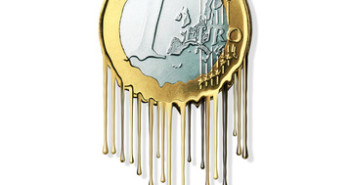The ECB convenes for its monthly rate decision and expectations are higher after Mario Draghi’s Jackson Hole speech.
Will the ECB act now or just hint of QE in the future? Will the event allow the pair to recover or further push it down? Here is a preview:
Updates:
- EUR/USD guide next levels after the ECB cut
- ECB surprises with a 0.15% rate cut – EUR/USD free falls
- Reports that ECB will launch QE worth €500 billion – EUR/USD down
Update: Draghi announces sizable ABS – EUR/USD dips below 1.30
First, what’s going on with EUR/USD recently? In three words: monetary policy divergence. The Fed is set to tighten within less than a year and the ECB is expected to leave low rates or even announce more monetary stimulus soon.
And finally, this monetary divergence is having an impact, with the pair falling steadily.
Recent European issues
- No growth: Euro-zone growth was flat in Q2. The German economy contracted by 0.2% and the French economy remained unchanged for quite a while. And while Spain managed to grow nicely, Italy entered a recession. The European stagnation comes in contrast to strong US growth.
- Russian clouds: The tensions around Ukraine have intensified since the downing of MH17. The recent incursion / invasion of Russian troops into Ukrainian territory complicated matters, as well as Putin’s rumblings about taking Kiev in two weeks (denied later). The EZ and especially Germany, depend on Russian gas and have significant trade with the country. The Russian ban on food imports from the EU could push prices even lower. The tensions have an impact on German business confidence. Europe has more to lose from the worsening relations with Russia.
- Low inflation: Headline inflation fell to 0.3% in August, while core inflation rose to 0.9%. The ECB is expected to deliver a 2% or a “bit below”, and this is getting out of hand. Despite the fall of the euro, price developments are weak. A dream level would be 1.20 to 1.25, but this is far away.
- Draghi explains: In the previous press conference, Draghi explained how the fundamentals of a weaker EUR/USD are in place (monetary divergence, change in flows and June’s measures) and EUR/USD fell since then. His more recent words are more important: In Jackson Hole, not only did Draghi call on governments to do more, but he also admitted that low inflation is not only due to temporary factors, but also that inflation expectations are changing. This is a big change from Draghi.
All this leads to higher expectations for the ECB. What can happen?
4 Options
- Even lower rates: The current lending rate is at 0.15% while the deposit rate is a negative 0.10%. There is speculation that the ECB will cut the rate to 0.05% and the deposit rate to -0.20%. The probability is low, especially as Draghi said in June that rates have “reached their lower bound“. In addition, the real impact on the economies would be minimal and the impact of the message is also problematic: will it show that the ECB is acting and will act more? If so, it’s euro negative. Or is it a substitute for QE? In this case, it is euro positive. We will know about the rates already at 11:45 GMT.
- Lower inflation forecasts: The ECB publishes inflation and growth forecasts every three months, and this is the time to lower forecasts. It has a very high probability as it would reflect the Jackson Hole speech. It would also enhance the message that QE is coming – to battle this low inflation. This is basically priced in, and impact depends on the forecasts.
- Stronger rhetoric on QE: Draghi can still raise the rhetoric before markets will stop listening. Why? QE in the euro-zone is complicated: what bonds do you buy? If you buy Asset Backed Securities (ABS), what is the size? What assets and from what banks? The ECB recently hired Blackrock and Draghi could certainly argue that more time is needed. Draghi probably has another two months or so to deliver before he will be seen as “crying wolf”.While this is expected, it would still put pressure on the euro. The message needs to be strong. Without a strong determined message, the euro could rise.
- QE Announcement: This has a small chance, but if it happens, the effect will likely be negative on the euro. Here is why it will probably not happen now. June’s moves are too close, including the TLTRO’s which come into effect this month. Bank lending is already changing in the euro-zone, with banks more willing to lend out money. As aforementioned, markets probably give Draghi more time and perhaps most importantly, the Germans are probably not behind such a move, not yet.
To sum it up:
- Rate cuts: low probability, impact depends on the message.
- Lower forecasts: quite certain, mostly priced in, impact depends on the numbers.
- QE hints: high probability – message needs to be strong to weigh on the euro.
- QE announcement: low probability, huge impact.
For more, see the EUR/USD forecast.
And even more, our latest podcast reviewing September’s biggest events.
Download it directly here.
